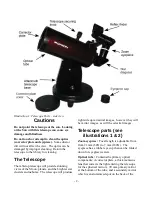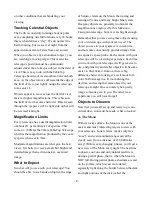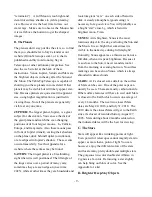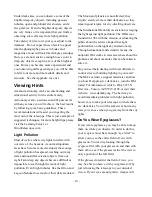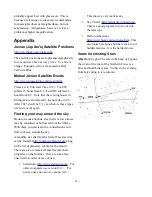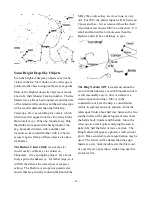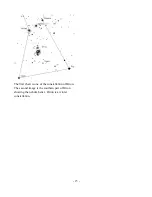
Under dark skies, you can observe some of the
brighter deep-sky objects, including gaseous
nebulae, open and globular star clusters, and a
few galaxies. Even the brighter deep-sky objects
are very faint, so it is important that you find an
observing site well away from light pollution.
Take plenty of time to let your eyes adjust to the
darkness. Do not expect these objects to appear
like the photographs you see in books and
magazines; most will look like dim gray smudges.
Our eyes are not sensitive enough to see color in
deep-sky objects except in a few of the brightest
ones. But as you become more experienced and
your observing skills get sharper, you will be able
to ferret out more and more subtle details and
structure. See the Appendix for a list.
Viewing Hints
Amateur astronomy can be an entertaining and
educational activity for the entire family.
Astronomy is also a serious scientific pursuit. As
with any science you will achieve the best results
by following some basic guidelines. These
recommendations will assist you in getting the
most out of the telescope. This is just a sample of
suggested techniques; for more helpful tips please
visit the Learning Center at
OrionTelescopes.com.
Light Pollution
Most of us live where city lights interfere with
our view of the heavens. As our metropolitan
areas have become more developed, the scourge
of light pollution has spread, washing out many
stars and nonstellar celestial objects from our
sight. Faint deep sky objects become difficult or
impossible to see through the murk of light
pollution. Even bright nebulas like the Orion and
Lagoon Nebulas lose much of their delicate detail.
The Moon and planets are not affected; they
require steady air more than dark skies, so they
remain good targets for city-dwelling observers.
The International Dark-Sky Association is waging
the fight against light pollution. The IDSA was
founded in 1988 with the mission of educating the
public about the adverse impact that light
pollution has on the night sky and astronomy.
Through educational and scientific means, the
nonprofit IDA works to raise awareness about the
problem and about measures that can be taken to
solve it.
Do you need help dealing with local officials to
control street or building lighting in your area?
The IDA’s extensive support materials can show
you how. Help preserve dark skies, join the IDA
today! For information, write to IDA, 3225 N.
First Ave., Tucson, AZ 85719-2103 or visit their
website: www.darksky.org. The best way to
avoid immediate problems with light pollution,
however, is to take your telescope to where there
are dark skies. You will be amazed at how many
stars you can see when you get away from the city
lights.
Do You Wear Eyeglasses?
If you wear eyeglasses, you may be able to keep
them on while you observe. In order to do this,
your eyepiece must have enough “eye relief” to
allow you to see the entire field of view with
glasses on. You can try looking through the
eyepiece first with your glasses on and then with
them off, to see if the glasses restrict the view to
only a portion of the full field.
If the glasses do restrict the field of view, you
may be able to observe with your glasses off by
just refocusing the telescope to your unaided
vision. If your eyes are astigmatic, images will
- 10 -
Summary of Contents for StarMax 90
Page 16: ......


